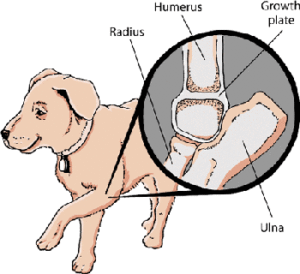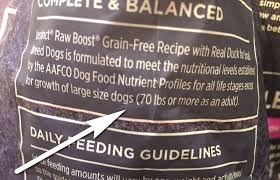Unregulated
The raw pet food industry is unregulated. This means that basically anyone can start their own raw pet food company without any background knowledge in pet nutrition requirements or food safety. Also, feeding trials have not performed resulting in a lack of scientific evidence proving the effectiveness of raw food diets for your pet’s health.
Contamination with Bacteria
The Centers for Disease Control and Prevention (CDC), the Center for Veterinary Medicine (CVM), and the US Food and Drug Administration (FDA) stand united in their position (based on very robust data) that feeding raw food to dogs is potentially dangerous to both the dog and to you. The most recent study, conducted from 2011 through 2012, screened commercially available raw dog foods for bacteria that can cause illness. The raw dog food products were made from ground meat or sausage and frozen in tube-like packages. Nearly 25% of the raw food samples tested positive for harmful bacteria, including Salmonella ssp. and Listeria monocytogenes. These bacteria can pose a health risk for the dogs who eat the raw food, as well as for the dog owners who handle the food while preparing it.
Salmonella
Dogs can actually carry Salmonella in their intestines without showing signs of illness, thus serving as a reservoir for ongoing exposure to the humans in the household. In dogs, the symptoms of salmonellosis include:
- Vomiting
- Diarrhea (often bloody)
- Fever
- Inappetance (not eating, or not eating enough)
- Lethargy
Listeria
Listeriosis particularly targets newborns, the elderly, pregnant women, and those with compromised immune systems. The L. monocytogenes bacterium can invade many tissues including the brain, the tissues surrounding the brain and spinal cord, the gastrointestinal tract, and the bloodstream. Symptoms depend on which tissues are affected. Dogs can carry L monocytogenes without showing any signs, making them a potentially dangerous reservoir.
Metabolic Bone Disease
Feeding a raw diet to growing dogs and cats is potentially even more dangerous than just the increased risk of bacterial infection. Many raw diets are not formulated with the appropriate nutrient balance (in particular the calcium and phosphorus balance) in order for bone growth and development. Feeding just an assortment of muscle and organ meats will not meet this necessary balance. Feeding such a diet increases the risk of developing metabolic bone disease which is when a pets bones do not ossify (harden) normally and are at a higher risk of fracture. Furthermore, given the bones are soft and malleable, they are often not strong enough to withstand placement of surgical plates or pins which could be recommended to treat certain fractures.

What Can You Do If You Want to Feed Raw?
As a general statement, most veterinarians will not recommend a raw diet to a young, growing animal given the health risks. Many clinics will also not accept raw diets to be fed in the clinic or boarding facilities given the risk to other pets (as well as the staff). Many owners feel a raw diet will be a benefit in cases of food allergies. However, typically food allergies will be to a protein source (such as chicken, beef, fish, pork etc.), and many raw diets contain meats/organs from a number of different species rather than from a single source.
While there are many online sources that promote raw diets, from the veterinary stand point there has not been a single scientific study that shows they are a benefit to the pet and a number that show they are a risk to the people at home. That being said, what you as an owner feeds your pet is entirely your decision.
If you are going to be feeding raw, it would not be recommended to feed while the pet is growing and should only be started once the pet has reached their adult size (generally about 1 year, but does depend on the species and breed). Look for the “AAFCO Approval” on the bag, which indicates a veterinary nutritionist has examined the nutrient content and has deemed it appropriate for a specific stage of growth or maintenance. However, please note that this does not indicate that the food is free of bacteria or contamination.

If feeding a raw diet, ensure all dishes are cleaned regularly and thoroughly. Hands should be washed diligently and do not allow pets to lick around your face or in your mouth given the risk of bacterial spread from them to you. Seek medical attention should you start to feel unwell and let your doctor know your pet is on a raw diet.

